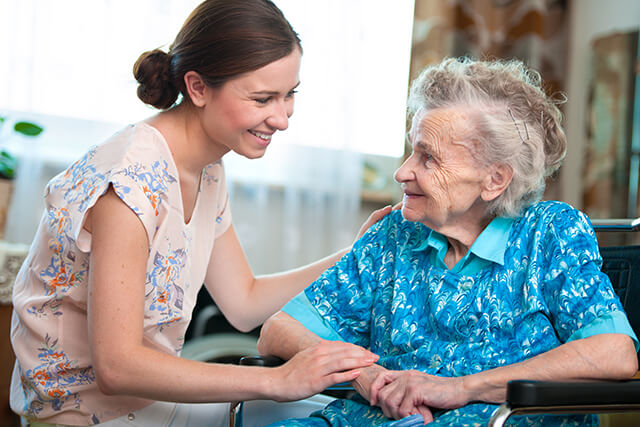
A Closer Look into the Caregiver-Patient Relationship
Often romanticized in books and films, a caregiver-patient relationship, in reality, is a bond that needs to be tread on carefully. There is more to a caregiver’s role than just taking care of the seniors, elderlies, the injured, or the disabled medical-related concerns and assisting with their daily needs around the house. How a relationship is being dealt with between caregivers and their patients significantly impacts the patients’ quality of life. The relationship could essentially help improve a patient’s life with great care, or it could be the opposite way around. And the impact is not only on the patient’s life; it can also potentially affect the caregiver’s life. Their relationship is one that’s built on genuine trust, trust between the caregiver and the patient’s family, and trust between the caregiver and the patient. Author Eleanor Gaccetta shared in her memoir, One Caregiver’s Journey, her experience of round-the-clock taking care of her mother for nearly ten years. She opened up about the reality and challenges caregivers face in this love-inspired book and imparts knowledge and tips that prove very useful for caregivers in their profession.
Challenges in a Caregiver-Patient Relationship
A caregiver-patient relationship is akin to a rollercoaster kind of relationship. It is a unique, one-of-kind relationship, with often lots of murky and uncharted waters of mental and emotional processes to navigate through to make the relationship work. Being mindful and aware of what a patient is going through, their family, and their background, can help a caregiver prepare for what lies ahead in their duties.
One of the common challenges in the caregiving role is the patient’s uncooperativeness, making it difficult for caregivers to do their job. Their unwillingness to do as they’re told delays or puts on hold the rest of the caregiver’s task. This unwillingness trait is often portrayed in an irritable or annoyed manner, even at times coming off as being aggressive. There is, of course, a reason behind the negative attitude. It could be that the patient feels depressed about their current condition, might even be feeling a bit insecure, and doesn’t want to be a burden to anyone. Their aggressive behavior might actually be a defensive behavior, a sign of frustration from the feeling of being utterly helpless and totally dependent on other people, a proclaimed self-perceived burden.
Being uncommunicative is another hindrance to the work of a caregiver when taking care of a patient. A patient may be cooperative but refuses to talk about their situation or condition personally, so the caregiver has to put extra effort into researching what the patient wants and needs to ensure that their patients are comfortable. One of the reasons why a patient is uncommunicative is that they might feel embarrassed or fear denial if they start to open up.
Another challenge is the work condition or environment. It can be uncooperative family members or unavailability or lack of resources to make the caregiver’s working environment conducive to success. Albeit not directly related to the patient itself, an unfavorable working environment can definitely put a strain on the caregiver and patient’s relationship. Challenges in the work environment could be in the form of an unreasonable work schedule, no proper break or consistent rest day for the caregiver, inadequate supply, equipment, or resources that could ease some of the burdens for care, or it could even be lack of good benefits for the caregiver.
Boosting the Caregiver-Patient Relationship
The success of a caregiver-patient relationship ultimately depends upon the bond between the carer and the patient. The road to an effective and successful relationship between the two is not an easy one to take, but definitely worth taking as the outcome is a win-win situation for both the caregiver and the patient.
One of the ways to boost the caregiver-patient relationship is for the caregiver to do due research in advance on the patient, the patient’s condition, family, and background. Being prepared can help put the caregiver in the proper perspective and plan the necessary actions they could take in dealing with the patient. For instance, if the patient is being aggressive and uncooperative, the caregiver could look at the bigger picture to avoid getting hurt by whatever is thrown at them and then plan activities that could warm up the patient.
Practicing compassion and patience could also improve a caregiver’s relationship with their patients. Understanding and empathizing with their patient’s condition can help caregivers be more tolerable. They say patience is a virtue, so it is an essential virtue in this case. Caregivers must develop a perspective that their patients, especially the disabled, cannot completely control their actions. Therefore, an extra sense of mindfulness and empathy is needed in this situation.
Engaging and communicating with their patients often is also another relationship booster. Care patients often feel very lonely and isolated. Having someone to talk to, express their feelings, and have someone to listen to them, especially without judgment, is good for the patients’ mental and emotional health.
Ensuring that the caregivers’ welfare is also being looked after is another enhancer for a caregiver-patient relationship. The more the caregivers feel that they are valued for their work, the time they put in, and that they’re treated equally as persons who have personal needs can definitely help improve or make caregivers give their very best at their work.
Takeaway
Quality care means a quality relationship between the caregiver and the patient. The road is rough in this unique relationship, yet the outcome of successfully achieving a good relationship is worth it. A successful caregiver-patient relationship can help improve the quality of life of a patient. It also helps make caregiving and its roles and responsibilities a fulfilling and rewarding profession. Perhaps the best takeaway of it all.





No Comment